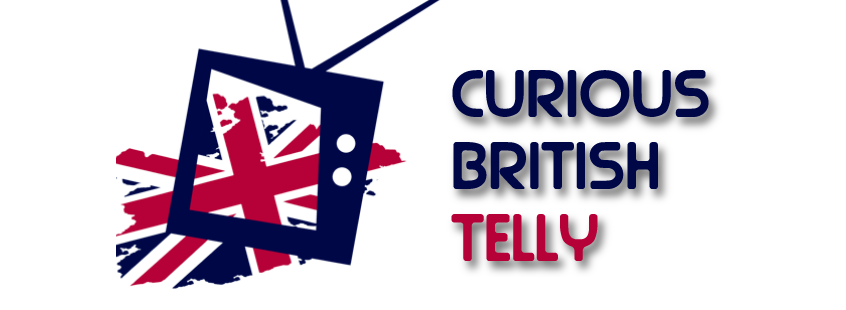Ever since TV-am’s Good Morning Britain and the BBC’s Breakfast Time went head-to-head in 1983 for the nation’s attention, breakfast television has had a ubiquitous presence on our airwaves. Moving on from those inaugural broadcasts, and in amongst mouthfuls of Sugar Puffs (other cereals are available), we’ve gone on to digest The Big Breakfast, GMTV, Good Morning Britain (the modern one with old Piers Morgan) and, uh, RI:SE and, double uh, Morning Glory. It’s quite the legacy, but dig a little deeper and you’ll discover that it’s not one which was laid down by TV-am or the BBC.
A good two years before breakfast TV arrived in the mainstream, Greenwich Cablevision had launched Greenwich AM. Billed as Britain’s first regular breakfast service, Greenwich AM made its debut on the 1st of May 1981. With its mix of news, travel information and entertainment features. Greenwich AM was 90 minutes of early morning content put together by local journalists and community groups. But despite being described as Britain’s first regular breakfast service, it was lagging behind the very first early starter.
It was in March 1977 that Britain – or at least parts of it – got their first serving of breakfast television. In the Yorkshire Television region there was Good Morning Calendar and over in the Tyne Tees Television area (also operated by Yorkshire’s owners Trident Television) viewers would see Good Morning North. The project was purely experimental at this point, with a nine-week lifespan applied to the enterprise. Paul Fox, managing director of Yorkshire, aimed to reach half a million viewers between themselves and Tyne Tees with a significant eye on the commercial opportunities; taking out a 30 second advertising slot – to air in both regions – would cost £230.
These regional opt-outs, however, were far from an Olympic breakfast (and don’t say I don’t give you enough Little Chef references), running for only an hour from 8.30am – 9.30am. And, of this hour, only a meagre 15 minutes was original content, which came in the form of the Good Morning sections. Consisting of mostly filler, the standard lineup was:
8.30: Good Morning Calendar/North
8.45: Children's section
9.00: Peyton Palce
Given the era in which the Good Morning Television experiment took place, the last thing you would expect is for YouTube to be bursting at its digital seams with footage. Nonetheless, the very first edition of Good Morning Calendar has made its way there, so we can at least get a look at how the whole affair kicked off. The opening titles mostly tell you that a) budgetary constraints were an issue given the simplistic design and b) it’s the 1970s. Moving onto the actual programme and, without further ado, it’s time to meet the longstanding ITV presenter Bob Warman – believe it or not, this absolute legend of the game only retired in April 2022. Bob’s excited and, no doubt, the viewers are too, so what’s in store?
Well, I hope they like news stories accompanied by still images and phoned-in weather reports as that’s about all Good Morning Calendar has in store for them. These are early days, in fact the very earliest, but you would have thought Paul Fox’s dream of encouraging advertisers to take out space involved a few more bells and whistles. If anything, this edition of Good Morning Calendar feels like more of an extended in-vision continuity break – ironically, Yorkshire Television hadn’t used such a presenting style since 1970 and never would again. But, you know, it’s a brand-new format and, as these things are always described, almost in a pre-apologetic way, it’s experimental.
The Good Morning section of the schedule may have been rudimentary, but at least it was new and relevant. The two elements which followed, though, were nothing more than old hat. The children’s section consisted of repeats of Mr Trimble or, on other mornings, cartoons from Warner Bros, all a far cry from the original children’s content that TV-am would deliver with segments such as Data Run and The Wide Awake Club. As for Peyton Place, well, it was several years old at this point and the programme’s inclusion was an obvious case of “what can we stuff in here to make up the hour, lads?” but this is hardly a unique situation, and filler will surely blight schedules until the end of time.
With such little footage available, and even anecdotal memories being scant, it’s a struggle to give a definitive opinion on the Good Morning Television experiment. It’s unlikely that any wholesale changes were brought in, so I’m going to throw caution to the wind and judge it as is. Innovation is an integral part of progress and, unquestionably, this element is proudly delivered by Good Morning Television. Aside from the excitement of the actual format, though, it’s a rather staid affair and does little to indicate that it’s something the schedules are crying out for.
Extended broadcast times would have been welcomed by all, but it needed to be a little more revolutionary to make a mark. The concept here is also hamstrung by the fact that most of the population would have left the house by the time Good Morning Television started its broadcasts. Significant tinkering was required to refine the format, but Yorkshire decided against proceeding with the format.
It would take three more years for the wheels of breakfast television to start moving, with the IBA announcing that ITV would be offering a licence for national breakfast television. And it would then be another three years before a regular service arrived on our screens. Good Morning Television may have only represented a minor stepping stone in this progress, but it was an admirable folly of innovation.




No comments:
Post a Comment